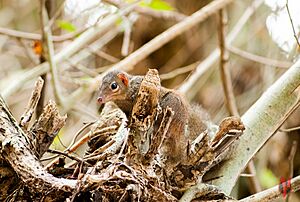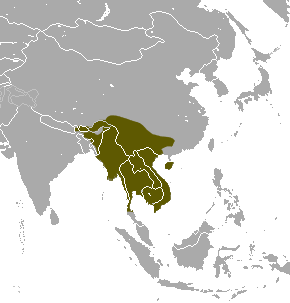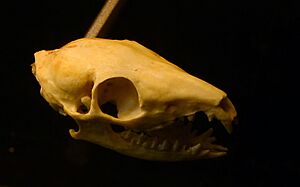Northern treeshrew facts for kids
Quick facts for kids Northern treeshrew |
|
|---|---|
 |
|
| Conservation status | |
| Scientific classification | |
| Genus: |
Tupaia
|
| Species: |
belangeri
|
 |
|
| Northern treeshrew range | |
The northern treeshrew (Tupaia belangeri) is a small mammal found in Southeast Asia. It looks a bit like a squirrel, but it's actually part of a group called treeshrews.
In 1841, a German scientist named Johann Andreas Wagner gave this animal its scientific name. He studied treeshrews that were found during a French trip to Southeast Asia.
Amazing Facts About Treeshrews
Northern treeshrews have an interesting body temperature. It can change a lot between night and day. At night, their body temperature might be around 35 degrees Celsius (95°F). During the day, it can go up to 40 degrees Celsius (104°F). This big change helps them match their body clock to their daily activities.
Adult northern treeshrews usually weigh about 0.2 kilograms (0.44 pounds). They can live for a long time, up to 11 years!
These animals are also very unique in their diet. Besides humans, the northern treeshrew is the only mammal known to enjoy eating spicy food!
Treeshrews in Science
Scientists are very interested in the northern treeshrew. They use it to learn more about human health and diseases.
For example, its liver cells can help scientists study the Hepatitis C virus. This virus causes a serious liver disease in people around the world.
Treeshrews are also important for studying eyes and vision. Their eyes are very similar to human eyes. This makes them great for research on how eyes develop and how we see. Scientists can learn about eye structure and vision using these animals. This is much harder to do with common lab animals like rodents.



